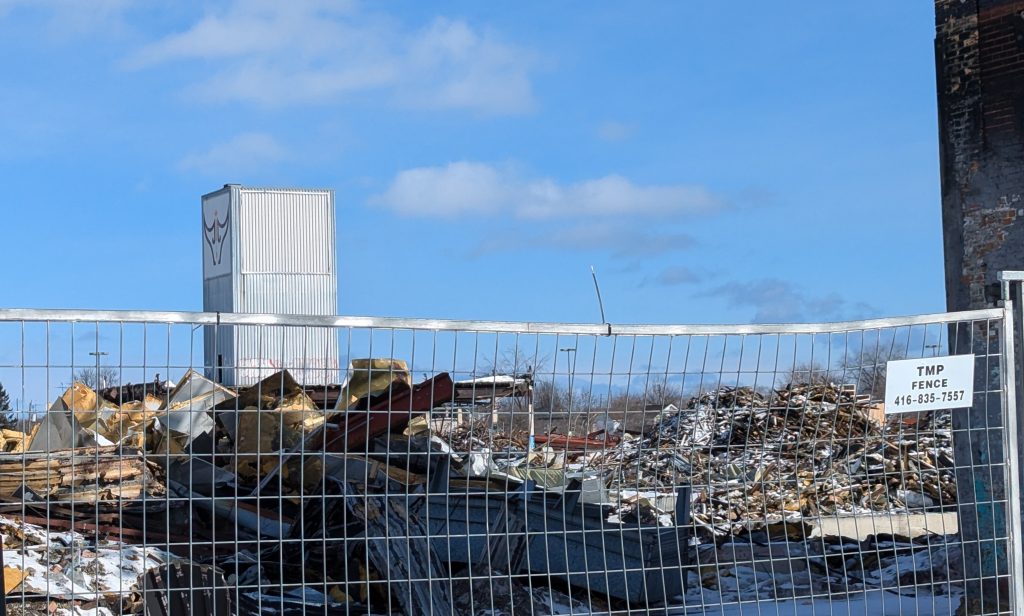After a quarter-century of dust and dreams, the massive Knob Hill Farms grocery terminal—once Ontario’s king of discount deals—is finally biting the dust in Oshawa. Demolition crews swung into action this January, flattening the 226,000-square-foot behemoth that’s loomed over First Avenue since shutting its doors in 2000. All that’s left? The iconic tower, still flashing its “Knob Hill Farms” logo over a sea of scrap metal, as Metrolinx inches closer to transforming this relic into Oshawa’s shiny new central GO station.
It’s been a saga longer than a grocery list. Metrolinx snagged the 500 Howard Street site back in 2014, promising a transit glow-up with two new Oshawa stations and two more in Clarington, stretching the GO line to Bowmanville. That was 11 years after the land got expropriated and eight since the province swore it’d be done by 2024. Spoiler: we’re still waiting. “More updates as we roll,” says Metroland’s Andrea Ernesaks, keeping timelines vaguer than a sale-by date.
Last summer, crews swooped in to save a slice of history—the redbrick façade from the 1897 Ontario Malleable Iron factory rebuild. That’s the good stuff: a two-storey nod to Oshawa’s industrial soul, where strikes in 1900, 1940, and beyond shaped Canada’s labour story. Now, with the main warehouse rubble-ized, preservation’s chugging along—think rehab and mothballing—while the tower stands sentinel.
Oshawa Councillor John Gray’s hyped but not holding his breath. “Metrolinx isn’t exactly the poster child for speed,” he quipped last November, tossing shade at Toronto’s Eglinton Crosstown crawl. “We’re itching to see shovels hit dirt.” Premier Doug Ford’s on board too, hyping the extension as a 2022 campaign gem after the Liberals first pitched it in 2016. Last year, he crowed about “shovels in the ground” with Bowmanville Construction Partners (Ledcor CMI Ltd. and Dragados Canada) tapped to lead the charge.
This isn’t just about trains—it’s a rebirth for a site steeped in hustle and heartbreak. Before Knob Hill’s 1983 debut, the Ontario Malleable Iron Co. ruled from 1872 to 1977, forging history with lockouts and closures—ITT Grinnell pulled the plug after a 14-month standoff. Then came Steve Stavros, the Maple Leafs mogul who said no to Gretzky and yes to mega-grocery. His Oshawa outpost thrived until Costco and co. ate his lunch, shuttering all 10 stores in 2000. Across the street, a glass factory bit it in 2009—now it’s residential turf.
The $730-million (2023 bucks) GO extension’s a beast: 20 kilometers of track, seven bridges, and all-day service to Union Station—30-minute peaks, 15 minutes shaved off Bowmanville commutes. Oshawa’s dreaming big—new stations, a juiced-up neighborhood—but with progress this slow, it’s end-of-decade vibes at best. For now, that lone tower’s a bittersweet tease: goodbye grocery glory, hello transit tomorrow.

